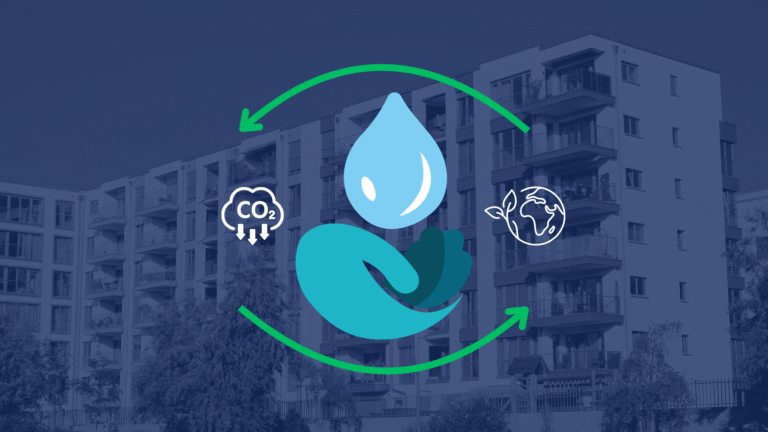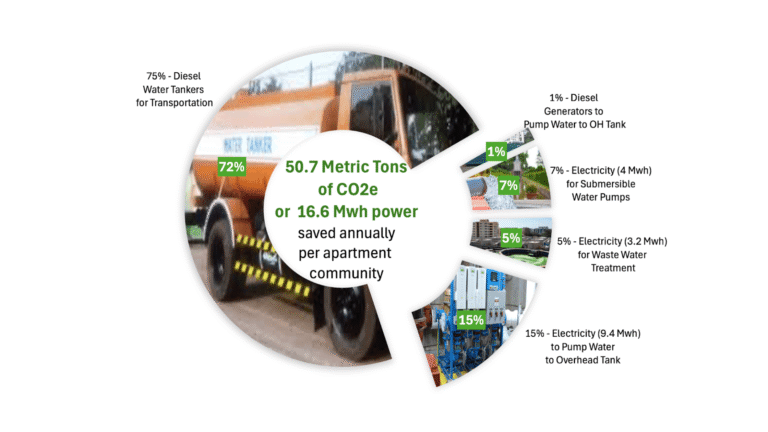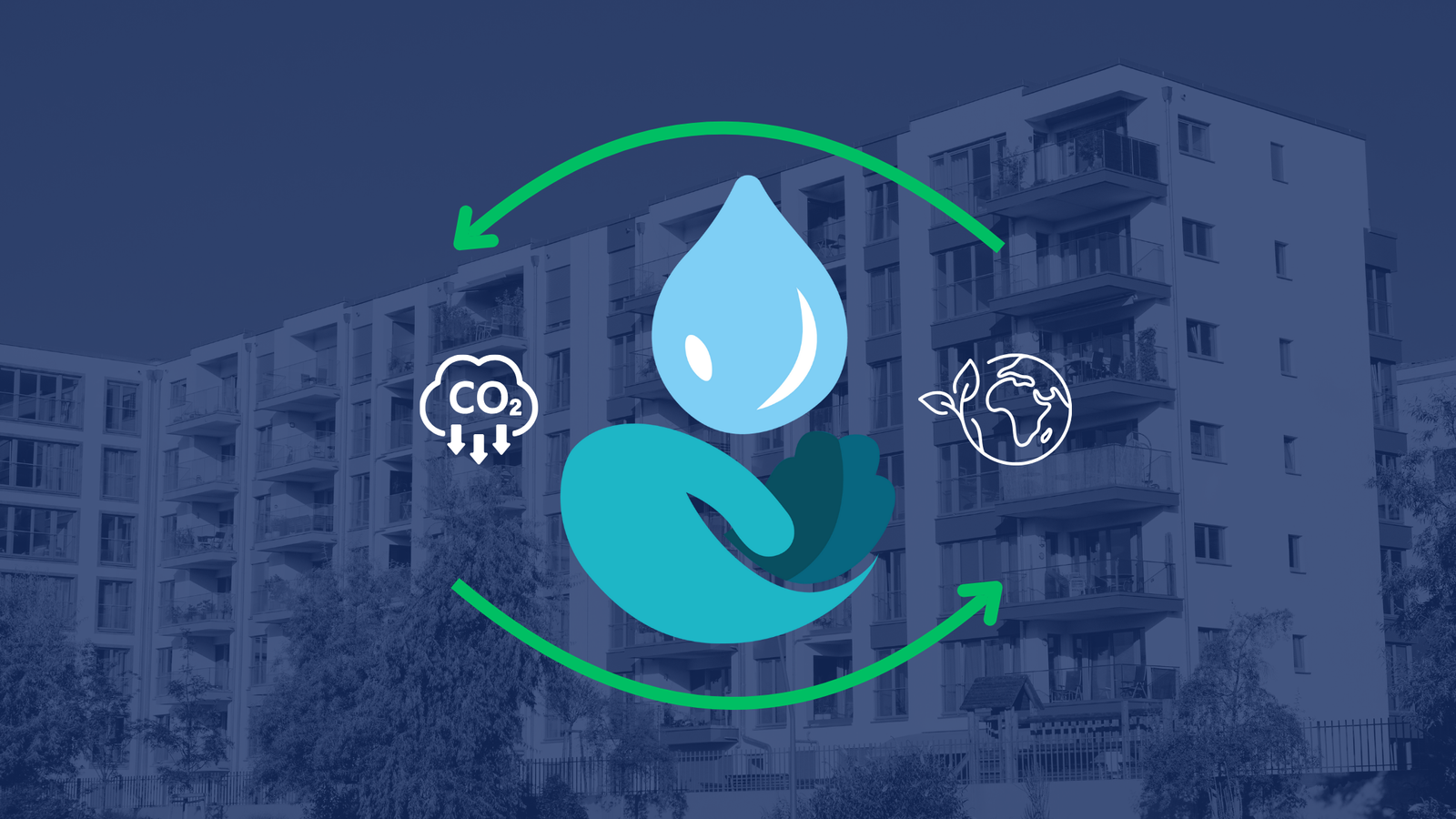How Measuring Urban Water Consumption Can Help Cut Carbon Emission
By simply fixing leaks and tracking usage in an average complex building, at least 87,500 litres of water can be conserved each day.
Jhalak Jain

Introduction
Most of us don’t think of water when we think of carbon emissions. But in urban India, the way water is sourced, used, and wasted has a significant environmental cost. Surprisingly, the quantity of water used in a typical apartment complex is equivalent to the carbon dioxide released by a car driving 418,000 kilometers!
The connection between water consumption and carbon emissions may not feel very evident, but here’s how it works: A typical urban apartment community, especially in big cities, often rely on water delivered through diesel-powered tankers. This water is then pumped using electricity, sometimes drawn from diesel generators during power cuts. When water is wasted through leaks, unmonitored usage or inefficiencies, these emissions rise. Since most of this process is invisible to residents, the environmental impact often goes unnoticed.
This is where the work of WeGot and Emit Earth becomes essential. Both organisations help identify and reduce the environmental footprint of everyday choices, especially the ones we rarely associate with carbon.
Water Usage and Its Hidden Emissions
Let’s consider a typical Indian apartment society.
Five hundred families, across five buildings, use about 700 litres of water per household each day. That’s roughly 350,000 litres of water daily.
Studies show that by simply fixing leaks and tracking usage, at least 25 percent of this can be saved. That’s nearly 87,500 litres of water conserved each day. Also in many of these urban areas, around 85 percent of this water is delivered through private tankers or extracted from borewells, both of which consume fossil fuel or power. Reducing water waste here is not only a conservation effort, it also directly cuts carbon emissions.

Avoidable carbon emissions due to water consumption in a typical Indian urban apartment complex.
Here’s what that looks like over a year:
- Electricity saved from reduced pumping and treatment: 17,600 kWh
- Diesel saved from fewer tanker trips and generator usage: over 16,000 litres
- Total carbon dioxide equivalent avoided: 50.7 metric tons annually
That is more than the total yearly emissions of many small businesses.
WeGot: Fixing the Leak at the Source
WeGot provides smart water metering solutions for urban residential communities. Their systems monitor water use in real time, unit by unit, helping detect leaks, overuse and irregular consumption patterns early.
WeGot has saved over 6 billion litres of water till now. This leads to financial savings for residents and also reduces the energy used in pumping, sourcing and treating water. Less energy means lower emissions.
By turning water from an invisible utility into a measurable resource, WeGot gives communities the tools to manage consumption responsibly. It is a simple intervention with wide-reaching environmental benefits.
Emit Earth: Making Scope 3 Emissions Measurable
Emit Earth focuses on a different layer of environmental impact. We specialise in tracking Scope 3 emissions, which are indirect emissions that occur across the lifecycle of a product or service. These emissions are often the hardest to quantify but can account for more than 70 percent of a company’s carbon footprint.
In the case of urban water, Scope 3 includes emissions from transporting water to the building, running pumps and treating wastewater. These are not direct emissions from a company’s operations, but they are very much part of the climate equation.
Emit Earth helps organisations measure these emissions using real-world operational data, including from systems like WeGot’s. Once emissions are mapped, Emit Earth helps identify ways to reduce them. This could include switching to renewable energy, improving infrastructure or optimising procurement practices.
As businesses work toward climate reporting and science-based targets, understanding Scope 3 is critical. It is not enough to focus only on direct emissions. A true picture of sustainability requires looking at the entire value chain.
How Rising Temperatures are Disrupting and Damaging Businesses
Climate-driven extreme heat is already reshaping how businesses operate. Studies…
How Measuring Urban Water Consumption Can Help Cut Carbon Emission
Most of us don’t link water usage to carbon emissions.…
Conclusion
Water is just one example of how our daily resource use contributes to carbon emissions. Electricity, materials, transportation and waste systems also have their own hidden footprints. The first step in reducing this impact is knowing where it comes from.
WeGot helps communities understand and reduce water waste, which in turn lowers energy use and emissions. Emit Earth builds on that by calculating the broader environmental impact of these activities, helping businesses and institutions take informed climate action.
If your organisation is looking to understand its complete carbon footprint, especially indirect emissions, visit emitearth.com. From measuring Scope 3 to setting science-backed sustainability goals, Emit Earth provides the insight and tools needed to drive long-term change.
Measuring impact helps us manage it. And managing it brings us one step closer to a more sustainable future.
Start Your Emissions Journey With Us
Join the movement towards a sustainable future. Discover how Emit Earth can help your organization achieve its climate goals.

